AmazingRibs.com is supported by our Pitmaster Club. Also, when you buy with links on our site we may earn a finder’s fee.
Click to see how we test and review products.
BBQ & Grilling Technique, Science, And Mythbusting (12 Pages, 65 Articles)

Good cooking needs more than good recipes. The best chefs understand “why” as well as “how” and they have developed tricks and techniques that can make major differences in the outcome. Here is more of the science behind cooking and some of our favorite tips and tricks that make cooking easier, and the outcome better.

Basic Meat Science For Cooks
What is meat and how does cooking alter it? Discover the science of what meat is made of, including water, fat, protein, connective tissue, salt, and other minerals. And find out what happens when meat meets heat.
The Thermodynamics of Cooking and How Different Cooking Methods Work
Learn about thermodynamics: the basis of all cooking! Find out how heat transference works by conduction, convection, radiation, induction, and infrared heat in your grill, bbq, and smoker.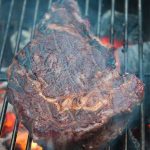
Cooking BBQ Hot And Fast, Low And Slow, And The Reverse Sear Method
What is the right cooking temperature for barbecue? It depends. Not all food should be cooked low and slow or hot and fast. Sometimes, a combination of both is best, as seen in the reverse sear and in sous-vide-que. Read more about 2-zone cooking and when to grill with the lid up or down for perfectly cooked BBQ.Grill And Smoker Setup And Firing Up (1 Page, 18 Articles)
What's the best way to set up your grill and smoker? The secret is to have temperature control, and for grills, that almost always means using a 2-zone setup. For smokers, the secret is to get a small hot fire that makes clean "blue" smoke rather that billowy white smoke.Salting, Brining, Curing, And Injecting (3 Recipes, 2 Pages, 6 Articles)
Salting and brining can significantly improve your cooking. Salt is unlike any spice and herb in the house physically and chemically, and it behaves in strange and wonderful ways when applied properly to food. Don't overdo it. When used judiciously it can seriously amplify flavor and juiciness.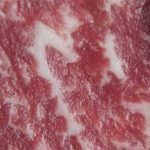
Buying Beef: Beef Grades And Labels, And Busting The Kobe Beef Myth
Grades of beef explained: Choice, Prime, Wagyu, Certified Angus, Kobe, aged, grass fed, grain fed, organic, natural, kosher, and halal.
Meathead’s Top 5 Meat Tips
January is National Meat Month and Americans are eating more meat, looking to get more protein and fewer carbs in their diets. Here are our top 5 meat cooking tips from our own bbq whisperer, Meathead.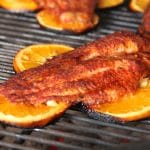
BBQ and Grilling Hacks: 12 Genius Ways to Save Time and Money
BBQ cooks are some of the most inventive cooks around. Live fire, hot coals, grill grates, heavy hunks of raw and cooked meat...they can all present some serious challenges. Here are our favorite outdoor cooking hacks to save both time and money while also creating delicious BBQ!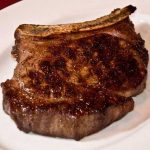
Myth: The Bones Make The Meat Better
"Tender at the bone" is a common phrase in cooking. It leads many cooks to believe that bone-in meat tastes better than boneless meat. Is it true? Do bones add flavor to meat or somehow make meat more tender near the bone? We have the answers, and they may surprise you.
How to Grill and Smoke Everything
More and more people are cooking at home. And more cooks are asking us: How do I smoke a brisket? What's the best way to clean my grill grates? How do I mail-order a gas grill? What's the best way to build a wood fire? Here are answers, including how to stay safe when handling food in the post-COVID era.
What’s A Proper Sear And Why Grill Marks Are Overrated
Stop trying to get perfect grill marks! Yes, grill marks make us drool, but they are a sign of lost potential. Fact: the most flavorful meat has the most browning across its entire surface, not just a few browned stripes. Let's bust that myth. Read on to find out how to make the most flavorful browned crust on meat.
Extreme Steak: Wild And Crazy Ways To Get A Killer Sear
Here are four offbeat methods for cooking steaks that work amazingly well: The Afterburner Method where you cook on a hot charcoal chimney, the Vigneron Method where you cook with twigs, the Caveman Method where you cook right on hot coals, and the Stripsteak Method where you sous vide in butter then sear on a grill.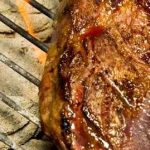
Myth: Searing Steaks Seals In The Juices
Sorry folks: searing meat to seal in the juices is a myth. Of course, searing meat has other benefits, most notably creating the delicious flavors of browned meat! Here are the facts about meat juices, searing, browning, and a better way to sear your meat called the reverse sear.
How to Dry Age Steak At Home
Here is how to dry age and wet age beef at home and save a lot of money in the process.
Myth: A Melting Fat Cap Penetrates Meat
The fat on the outside of meat does not melt and penetrate the muscle fibers making the meat moister. That is a myth. Here's the science on different types of fat, what happens as fat heats and melts, and the best way to trim meats before cooking to create the most delicious browned bark or crust.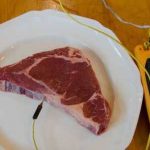
Myth: Let Meat Come To Room Temp Before Cooking
Do not bring your meat to room temperature before cooking it. That is a myth that poses a food safety risky. Letting meat sit at room temperature for a few minutes may be OK, but it's safer and better to simply take your meat from the refrigerator to the cooker. Here's why.
Thawing Meat And Busting The Hot Water Thawing Myth
Here's how to thaw or defrost meat safely. Surprisingly, you can do it in hot water! That method works best for thinner cuts of meat. For thicker cuts, find out what works best, including thawing in the refrigerator and in cold water. It's all food safety and preserving precious meat juices.
How to Remove the Membrane from Ribs: Skin & Trim ‘Em
Removing the paper-thin membrane from the bone side of ribs prior to smoking ensures that the ribs come out as tender as possible without guests having to gnaw through the membrane's tough texture. This how-to guide features step by step photos for trimming a slab of ribs and removing the membrane.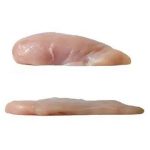
Pounding or Slicing Chicken Breasts for Perfect Even Cooking
Boneless, skinless chicken breasts are among the most popular meats in America. But they have a problem. One side is thick and one is thin, so they don't cook evenly. Pounding chicken breasts flat solves a lot of cooking and serving problems. Here's how to make an even piece of meat quickly and easily.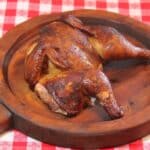
How to Spatchcock and Butterfly Chicken And Turkey
Spatchcocking, or butterflying, a whole turkey, chicken or any other bird is a great way to make moist, delicious birds that are browned all over and evenly cooked in less time. It's a simple matter of cutting out the bird's backbone, a deboning process that is easy and painless with good kitchen or poultry shears.
When You’re Cooking More Than One Hunk of Meat
What influences cooking time? So many variables, such as the total volume of meat in your cooker. Are you using rib racks to squeeze more meat into a small area? Beware. The meat is almost touching, and that could add up to an hour of cooking time. Here are more tips on cooking more than one hunk of meat at once.
Before You Start Cooking, Mise En Place, Put Everything In Its Place
Want to be a better cook? Learn mise en place. This French term means, roughly, 'everything in its place.' It is a mindset and a practice that helps you plan ahead and stay organized, which streamlines the prep and cooking processes. It can help shorten cooking and cleaning times and help prevent cooking disasters.
How To Dice An Onion As Perfectly As The Professionals
Check out our handy step by step photo sequence of how to dice onions properly. This is how the professional chefs do it. It doesn't requires any special knife skills, but this method is safe, easy, and fast. It's help you can get on with the rest of the food prep and finally get down to enjoying your meal!Everything You Need to Know About Knives (3 Pages, 2 Articles)
Buying a new knife? Wondering what is VG-10 steel? How do you hold a chef's knife? How do you clean one? How do you hone and sharpen a knife? Get incisive answers to these sharp questions and more in our ultimate guide to knives.
The Science of Knives
Before you drop serious cash on a knife, bone up on what distinguishes a good knife from a great one. The science of different metals, shaping techniques, and manufacturing technologies all influence how a knife sharpens, dulls, feels in your hand, and holds up over the long haul.
All You Need To Know About How To Sharpen And Hone Knives
Sharp knives cut. Dull knives slip. Stay safe by keeping your knife sharp. Here's a guide to honing and sharpening your knife using a honing steel and sharpening stones.
Party Planning: How Much to Cook for a Crowd
So you're cooking for a crowd. How much food do you need? Here's how to plan for a party or special occasion, including some basic rules of thumb and tips on how to handle dietary restrictions, how to prep ahead, and how to calculate the right amount of food so no one goes hungry.
Cooking Time – What Influences It?
Why are exact cooking times so hard to predict? Because the actual time it takes meats and other barbecued foods to reach a certain level of doneness depends on many variables such as the weather, the cooking method, the type of meat, meat thickness, humidity in the cooker, and the accuracy of your thermometer.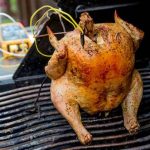
Beer Can Chicken Recipe: There Are Better Ways To Cook Chicken
Beer Can Chicken is not a good way to cook chicken. Here's why, and how you can make better roast chicken.
Award Winning Food Temperature Guide And What You Need To Know About Food Safety
We all strive to create tender, juicy, and flavorful meat, but we also want it safe. Monitoring the internal temperature is the best way to have the best of both worlds. Here's the ultimate guide to understanding proper cooking temperatures and food safety to ensure that your meat is cooked perfectly every time.
Marinade Myths And How To Add Flavor More Effectively
Marinades work on some foods but not on others. A good marinade contains certain ingredients but not others. Here's the truth about marinades and brinerades.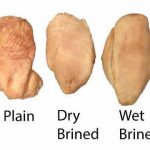
Wet Brining vs. Dry Brining
Salt helps protein hang onto water during cooking so brining is a great technique to make food moist. But which is better, wet brining or dry brining? It all depends on which meat you're cooking and the results you want. Get the details.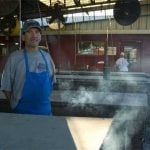
Mythbusting: Basting, Mopping, And Spritzing
There are times when basting helps and times when it hurts. Find out how applying liquid to the surface of meat with basting, mopping and spritzing may inhibit the formation of your crust or bark and lengthen cooking time while attracting smoke and improving flavor. It depends on what you're cooking and for how long.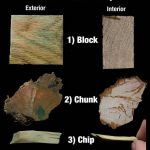
Myth: Soak Your Wood First
There is no need to soak wood before cooking with it. Water doesn't penetrate wood. That's why they make boats from it! Discover the science behind wood combustion, smoke, and the best way to use chips, chunks and logs for smoking and grilling with wood.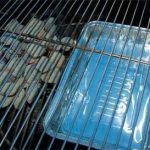
How To Use Drip Pans And Water Pans In Your Smoker Or Grill
What is the difference between a drip pan and a water pan? And why do I need some humidity when I make barbecue in the first place? Find out here along with tips on indirect grilling and an answer to the question: What should I put in my water pan on my grill or smoker? Hint: It's not wine, beer, or juice.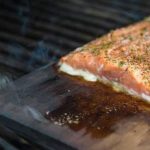
Cooking Fish On A Wooden Plank: Separating Fact From Fiction
Planking is a popular method for cooking fish like salmon on a grill. Fans claim that soaking the wood in water gently steams the fish, which gets nice and smoky from the smoldering wood. Planking makes a nice presentation and helps keep fish from sticking to the grill, but the rest is mostly bunk. Here's the science.Sous-Vide-Que Marrying The Grill, Smoker, And Sous Vide (13 Recipes, 3 Articles)
Sous-Vide-Que combines the best of three great cooking methods: grilling, smoking, and sous vide. From grilling you get the rich flavors of browning. From smoking, you get the alluring aromas of wood smoke. And from sous vide, you get evenly cooked meat that is incredibly tender and juicy.
How to Keep Food From Sticking to Your Grates
Don't you hate it when food sticks to your grill grates? This article explains how to prevent it: keep your grill grates clean and use the right temperature for the food you're cooking. Maybe lubricate the food (not the grates) with some oil. Some fish baskets and grill toppers may also help prevent sticking.
Mythbusting the Potato Nail
Can you make a potato cook faster by driving a nail through the center? In theory, the metal nail conducts heat through the potato, speeding up the cooking. To test the theory, our AmazingRibs.com science advisor, Professor Greg Blonder, ran a simple experiment. The results may surprise you.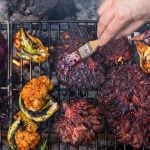
Barbecued Mushrooms Use a Revolutionary (and Delicious!) Press and Sear Technique
Looking for something new to barbecue? You'll love big cluster mushrooms cooked low and slow with this innovative press-and-sear technique.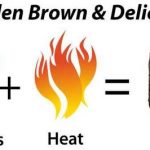
Golden Brown And Delicious: Why We Love Crust And How It’s Made
Recipes often tell you to cook food until it is browned. Why? Browning is flavor! The most important chemical changes in food occur when heat initiates the Maillard reaction and caramelization. These processes make food GBD: Golden Brown and Delicious. Read on to find out how it all works.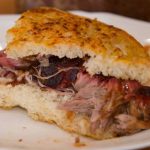
What is Bark, and Why It Makes Us Howl for More
Bark is that sweet, rich, crusty surface on low and slow cooked meat, and for many of us, the best part. It is part pellicle and part spice crust, but how does it form? The Maillard reaction, polymerization, and evaporation are key. Find out how to get better bark on your brisket, ribs, and pork shoulder.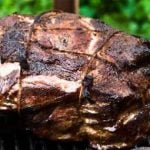
What Causes The BBQ Stall: It’s Not What You Think
Large hunks of barbecued meat have this nasty habit of rising to 150°F inside and then stopping there. But what causes the stall? It's likely not what you think!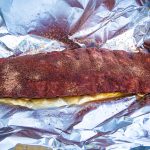
The Texas Crutch: Wrap In Foil Or Butcher Paper To Tenderize And Speed Cooking
Here's a useful technique for tenderizing, moisturizing, and speeding cooking by wrapping meat in aluminum foil for an hour or two. The Texas crutch beats the stall, in which meat stops cooking during barbecuing, sometimes for hours. This simple trick works for brisket, pork shoulder and ribs on any smoker or grill.
Myth: If You’re Lookin’ You Ain’t Cookin’
Conventional wisdom says you should keep the grill lid closed at all times. What do precise measurements tell us? It turns out that opening the lid may not have a huge effect on the grill's ambient temperature. Learn about all the variables and whether or not a steady temperature makes a big difference anyway.
Strategies for Using BBQ Sauces
Here's what you need to know about when and how to use BBQ sauce. There are tricks to know, including how much sauce to use on smoked ribs, pulled pork, and other barbecue. Find out when not to apply BBQ sauce, how to avoid burnt sauce, how to use a kitchen torch, and how to sizzle, glaze, paint on barbecue sauce.
Master the Art of Smoked Ribs with These 8 Simple Tips
We're crazy for incredible BBQ ribs and have plenty of smoked ribs recipes, cooking techniques, equipment recommendations, and mythbusting secrets throughout the site. But we know sometimes you just want to see the highlight reel instead of watching the whole game. No problem. Here are the 8 key steps you need to take.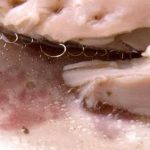
Myth: Chicken Is Ready When the Juices Run Clear
Many recipes say to cook poultry 'until the juices run clear'. If you do, you could end up overcooking your poultry or spending the night on the toilet. Find out the real science behind pink juices, undercooked chicken, safe doneness temperatures, salmonella, and why the best tool for food safety is a good thermometer.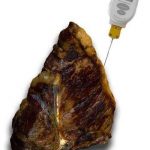
Myth: Stabbing Meat with a Thermometer, Fork, or Knife Will Drain it of Vital Juices
Does poking meat drain way all its juices? No. A piece of meat is not a water balloon. If you test it with a thermometer, all its juices will not drain away. In fact, using a thermometer is the only sure-fire way to judge the internal doneness temperature of meat. Find out why in this mythbusting article.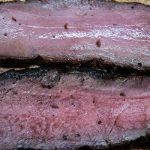
Myth: You Can Tell Doneness By Cutting Meat To Check The Color
Is meat color an accurate indicator of doneness? A lot of cooks cut into meat and judge doneness by the meat color. But the color of meat changes when it is exposed to oxygen. The only reliable way to judge doneness is with a good digital thermometer. Here's everything you need to know about meat color and doneness.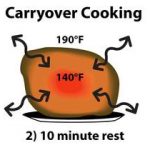
Carryover Cooking: A Problem or Much Ado About Nothing?
What is carryover cooking? It's true that the internal temperature of food can continue to rise after you've taken the food off the heat and placed it at room temperature. How long does carryover cooking continue? By how many degrees will the internal temperature rise? Here are all the variables you need to know.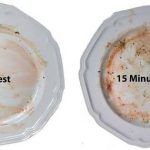
Resting Meat: Why I Think It Is A Mistake, And Why I think Holding Some Meat Is A Good Idea
Stop worrying about resting meat after it is cooked. Serve it hot. We bust this myth with a review of the scientific research, some tests of our own, some basic meat science, explanations of carryover cooking and what makes meat juicy, a look at doneness temperatures, and how carving comes into play.
A Faux Cambro Can Save Your Butt, Turkey, And Save Face
How do caterers hold cooked meats safely for so long? It's called a hotbox or Cambro and you can make a faux Cambro with a simple beer cooler. It's the secret to resting large cuts of BBQ like brisket, pork butts, and whole turkeys while keeping them warm and transporting them. Here's how to set up a faux Cambo.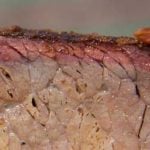
Mythbusting the Smoke Ring: No Smoke Necessary!
Smoked meats often have a pink layer below the surface called the smoke ring. But you don't need smoke to create it! It is created by myoglobin, a protein in meat, reacting with combustion gases. Read on to learn how removing the fat cap from meat, keeping the meat moist, and cooking low and slow create the smoke ring.
The Split Cook: Cook Today, Serve Tomorrow, The Wozniak Way
If you must cook your meat in advance and serve it the next day, here are some useful tips, courtesy of award-winning pitmaster Mike Wozniak. His tips and tricks work wonders for make-ahead smoked beef brisket and pork shoulder and can even be used for barbecued ribs if you're in a pinch.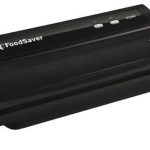
Freezing and Reheating Leftovers
Don't throw it away! Leftovers are just future meals waiting to happen. Here's what you need to know about freezing leftover meat, thawing, reheating, and using a vacuum sealer, along with some meal planning tips. Yes, it is possible to freeze and reheat leftover barbecue ribs.Tailgate Like a Pro Thanks To Our Amazing Recipes And Tips (25 Recipes, 5 Pages, 3 Articles)
Tailgating can be as simple or as fancy as you want it to be. Here's your ultimate guide to the gear, the recipes, and the planning tips that will make your next party in the parking lot the best ever.
Carving Makes a Difference in Tenderness and Appearance
You can ruin a perfectly cooked piece of meat by carving it horribly. Why? Because meat consists of long parallel muscle fibers. If you cut parallel to the fibers, they remain intact and are difficult to chew. When you slice across the fibers or across the grain, you make them easier to chew and hence more tender.
Hamming it Up: A Survey of the World’s Great Hams And How To Cook Them
There are many different types of ham around the world, but they all fall into three categories: Fresh ham, dry-cured ham, and wet-cured ham.
Beware Of The “Lasagna Cell”: The Danger Of Food And Metals
My foil-wrapped lasagna has holes in the foil: what's going on here? Some chemicals in foods react badly with certain metals and can even create toxins. Here's what you need to know about reactive and corrosive metals, how your lasagna can create a sort of electric battery cell, and how to avoid this problem.
Backroad Barbecue Beckons
Most RV kitchens are tiny. But with some planning and key pieces of equipment, you can turn our world class BBQ while traveling. Check out these key tips from our resident thermometer guru and avid RV traveler, Bill McGrath.Grill It In A Cast Iron Skillet (10 Recipes, 3 Pages, 2 Articles)
Here's everything you need to know about cooking with cast iron on your grill, in a campfire, and in your kitchen. Learn the science behind cast-iron skillets, Dutch ovens, and griddles, why they work so well, and how to season, clean, and repair vintage cast-iron pans. Try some of our favorite cast iron recipes too!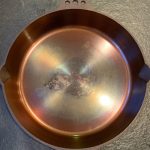
How To Season, Clean, and Repair Cast-Iron Cookware
There's only one thing to remember with cast-iron cookware: maintain the seasoning. All the tips about cooking and cleaning cast-iron are meant to maintain its seasoning. Find out what seasoning is, how to build it up, how to clean cast iron, and how to repair it if it's badly rusted. We bust a few myths along the way.
Understanding Stainless Steel
Here is what you need to know about stainless steel when buying a grill or smoker, including terms like austenitic, ferritic, 304 steel, and 430 steel. Find out why thickness matters, what is heavy gauge, and how to interpret gauge numbers. Find info on powder coated and enameled steel and how to clean stainless steel.
Cooking On Salt Blocks
Cooking on a salt block amps up flavor and makes a great presentation. You can put the salt block right on your grill, heat it up, and then cook on the salt block like a griddle. You can also bring a hot salt block to the table and sear meats tableside! Here's everything you need to know about cooking on salt blocks.Pizza Perfection: Everything You Need Know (9 Recipes, 2 Pages, 4 Articles)
You want to make the best pizza? Here's what you need to know from thin crust to deep dish, Naples to Rome, Detroit to New York, baking stones to steels, grills to pizza ovens, reliable dough recipes to the best topping combinations, and everything in between.
Conditioning And Seasoning A Pizza Stone
You should condition and season a new pizza stone or baking stone before using it. Here are simple instructions on how to do it so your pizza cooks perfectly the first time you use the stone.Frying Is Best Done On The Grill! (6 Recipes, 1 Article)
Frying is a project for your grill. If you do it on your grill, who cares if there are spatters, smoke, and there is no smoke alarm. Here are some articles and recipes that will show you how to make great fried chicken, onion rings, and more on your grill.Get Griddle Grilling With These Mouthwatering Recipes (19 Recipes)
Cooking on a hot griddle, flattop, or plancha is a great way to get an all-over flavorful sear. And it is fun! Here are some great recipes to get you started.
Dehydrating Meats, Peppers, Tomatoes, Fruits, Etc.
Beef jerky, chipotle chilies, and smoke-dried tomatoes taste fantastic. To make them, you need to dehydrate them. Learn about which foods you can dehydrate in a smoker for extra smoke flavor and which foods dehydrate best in an indoor electric dehydrator. Hint: kale chips don't work as well on a smoker.Food Health And Safety: What You Are Doing Right And Wrong (12 Articles)
Hundreds of thousands of Americans alone are sickened every year by their food, and some even die. Thousands more are hurt by knives, wire brush bristles stuck to meat, burns and other hazards around the grill. Here's an overview of the hazards and how to reduce the risk
Use A Cooking Log Or Diary
Want to cook better barbecue? Keep a log of your previous cooks and learn from them. In your log, include the meat, its weight, how you prepped it, what seasonings you used, the cooker and ambient air temperatures, the wood used, and how much. Here's the log that Meathead uses. Download it as a pdf or Excel copy.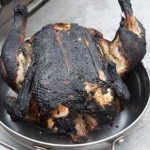
Barbecue Fubar: Some Of The Worst Outdoor Cooking Disasters
How do you avoid the worst BBQ mistakes? Undercooked chicken? Burnt chicken? Burned outside and raw inside? We ran a contest to hear some of the juiciest stories, so you can learn from the trials and tribulations of others. Here are the best of the worst cooking disasters and how to avoid them the next time you grill.
What Causes Some Beef To Have A Liver Flavor?
Some steaks have the undertone flavor of liver. There are several factors that cause it.
Important Weights, Measures, Calculators, Conversions, And Rules Of Thumb
Here are some very useful weights, measures, and equivalents that come in handy in the kitchen. You'll find an online conversion calculator for metric, imperial, volume, weight, length, and temperature, plus various handy food equivalents for salt, fat, sugar, and many other ingredients.Ingredients and Glossaries (1 Recipe, 26 Articles)
Garbage in, garbage out. So true of cooking. The quality of ingredients is paramount to quality dining. And there are subtle but important differences among salts, vinegars, oils, flours, and so on. In this section we will try to explain the differences.Related articles
- BBQ And Grilling 101: A Guide To Better Live Fire Cooking (2 Recipes, 8 Pages, 18 Articles)
- Basic Meat Science For Cooks
- The Thermodynamics of Cooking and How Different Cooking Methods Work
- Grill And Smoker Setup And Firing Up (1 Page, 18 Articles)
- Salting, Brining, Curing, And Injecting (3 Recipes, 2 Pages, 6 Articles)
- Cooking BBQ Hot And Fast, Low And Slow, And The Reverse Sear Method
- Meathead’s Top 5 Meat Tips
- Buying Beef: Beef Grades And Labels, And Busting The Kobe Beef Myth
- BBQ and Grilling Hacks: 12 Genius Ways to Save Time and Money
- Myth: The Bones Make The Meat Better
- How to Grill and Smoke Everything
- What’s A Proper Sear And Why Grill Marks Are Overrated
- Myth: Searing Steaks Seals In The Juices
- Extreme Steak: Wild And Crazy Ways To Get A Killer Sear
- How to Dry Age Steak At Home
- Myth: A Melting Fat Cap Penetrates Meat
- Myth: Let Meat Come To Room Temp Before Cooking
Published On: 2/14/2019 Last Modified: 4/21/2021


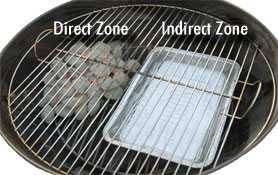

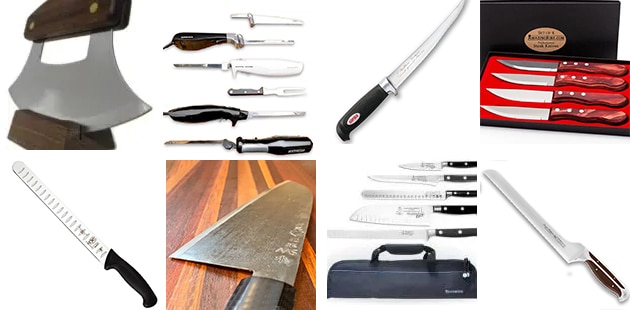
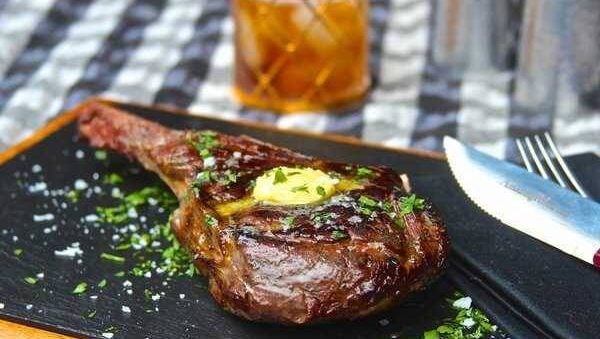


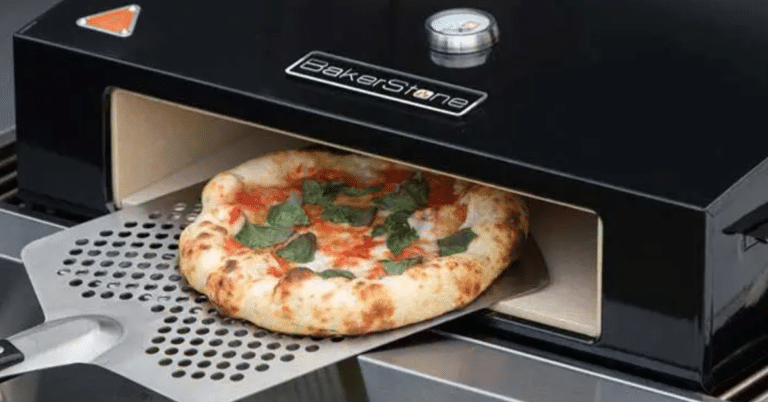
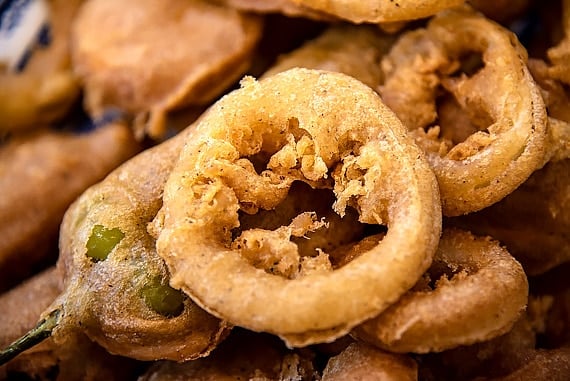
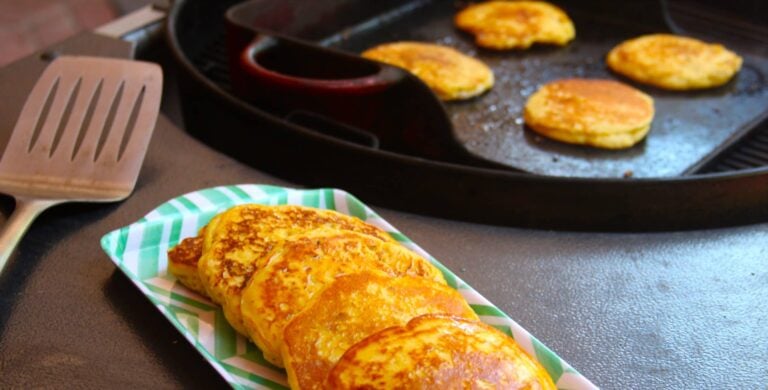

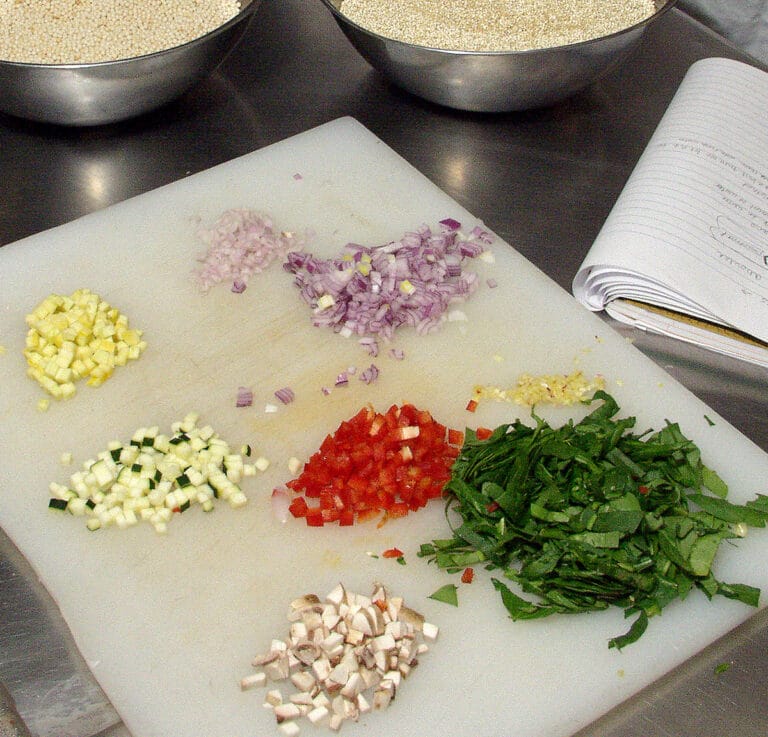

High quality websites are expensive to run. If you help us, we’ll pay you back bigtime with an ad-free experience and a lot of freebies!
Millions come to AmazingRibs.com every month for high quality tested recipes, tips on technique, science, mythbusting, product reviews, and inspiration. But it is expensive to run a website with more than 2,000 pages and we don’t have a big corporate partner to subsidize us.
Our most important source of sustenance is people who join our Pitmaster Club. But please don’t think of it as a donation. Members get MANY great benefits. We block all third-party ads, we give members free ebooks, magazines, interviews, webinars, more recipes, a monthly sweepstakes with prizes worth up to $2,000, discounts on products, and best of all a community of like-minded cooks free of flame wars. Click below to see all the benefits, take a free 30 day trial, and help keep this site alive.
Post comments and questions below
1) Please try the search box at the top of every page before you ask for help.
2) Try to post your question to the appropriate page.
3) Tell us everything we need to know to help such as the type of cooker and thermometer. Dial thermometers are often off by as much as 50°F so if you are not using a good digital thermometer we probably can’t help you with time and temp questions. Please read this article about thermometers.
4) If you are a member of the Pitmaster Club, your comments login is probably different.
5) Posts with links in them may not appear immediately.
Moderators